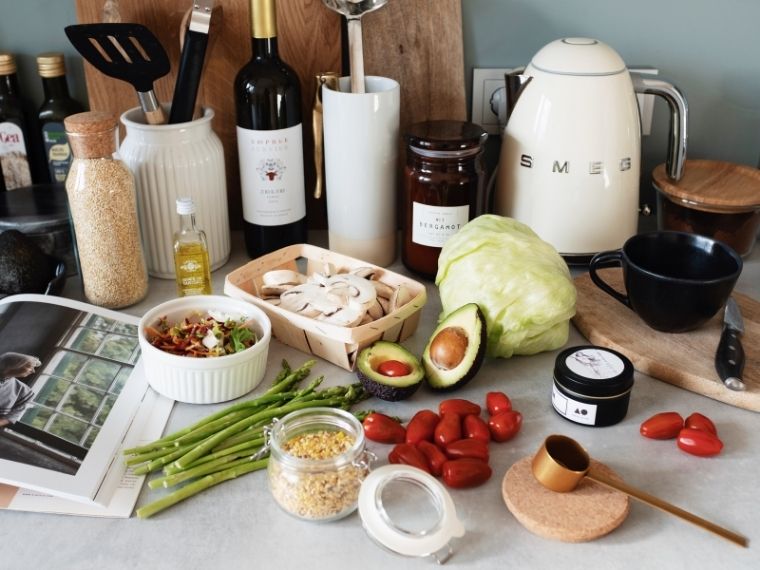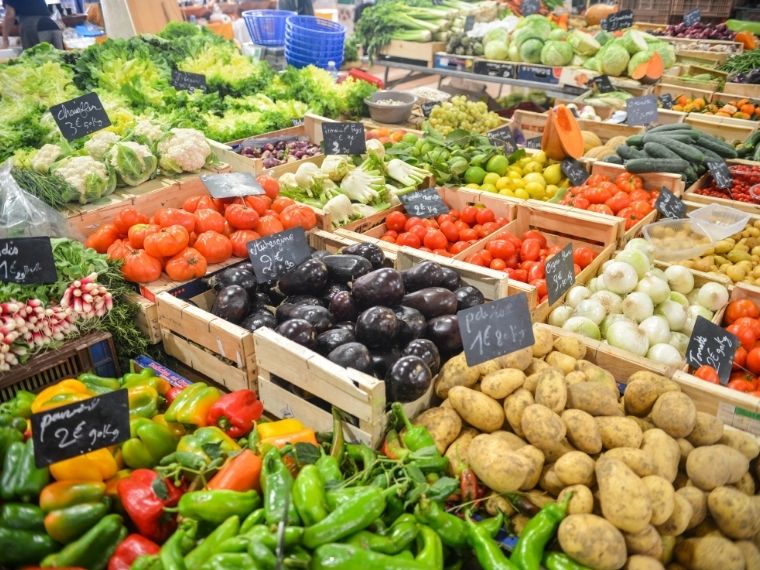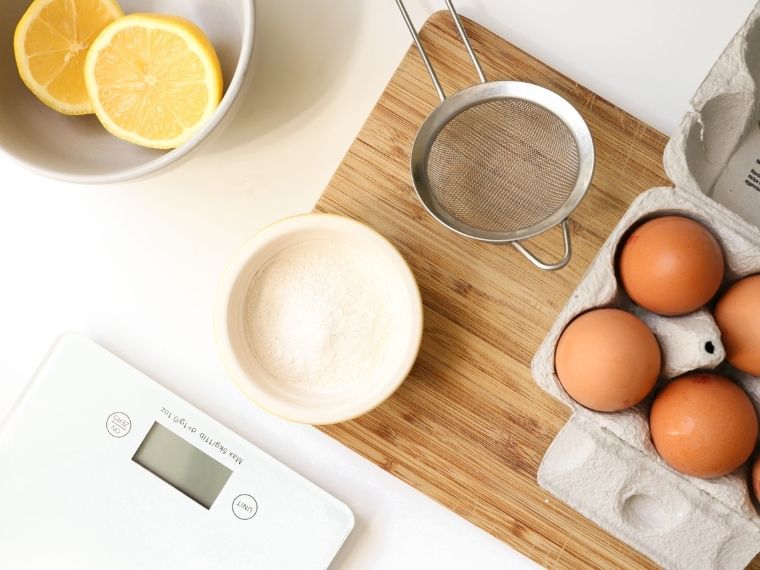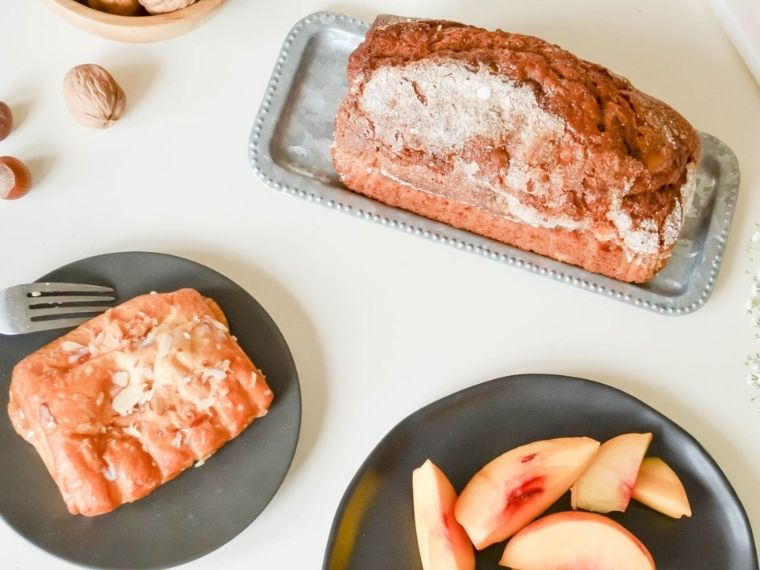
Everyone needs to buy food but you can learn how to save money on groceries to keep it under control.
In this post you will find:
1 – Grocery store marketing tactics
2 – Easy ways to reduce your grocery budget
Have you ever run into the grocery store to pick up some eggs and walked out with a cart full of snacks? It’s happened to all of us and it’s no accident on the supermarkets part. Don’t let grocery store sales tactics take advantage of your buying behaviour and finally learn how to save money on groceries.
Sneaky psychology of super markets
Yes, even grocery stores have marketing tactics to get you to spend more. Every feature of the store from the floor plan to product placement and lighting is all designed to get you to spend more time and money in the store.
“Upward of 50 percent of what we buy in a supermarket we had no intention of buying as we walked in the door,” psychologist Underhill says.
From the moment you walk into the store to the moment you pay and exit, your entire route has already been mapped out for you.
Right handed?
Studies have shown that shoppers like to walk through a store counter clockwise. This is primarily because 9 out of 10 people are right handed and we select things with our dominant hand. So, as you go through the store pushing your cart with your left hand, you choose product with your right.
Knowing this, stores will make the aisles on the perimeter of the store, compared to the front of the store, to be wider and more easily navigated with a shopping cart. In addition, the selection of products that are set up around the border of the store are no accident. The store begins with flowers, produce and baked goods. All products that will affect your senses, and trigger your salivary glands, to make it more appealing.
Seasonal Items
Once you walk in, you are immediately shown seasonal items. This includes things such as frosted cookies in December and chocolate bunnies in April. They act as a way to slow you down and start to consider the upcoming holidays.
Even if you don’t choose anything right away, it’s been put into your mind and then they are spread out throughout the store, making it easy for you to select the cookies and chocolate you have been thinking about since you walked in the store.
Fresh flowers
The other item that’s kept close to the store entrance are fresh flowers. This is creates a “fresh from the farm” feeling that sets the tone for your shopping experience. Consider how you would feel if when you walked in and there was a pile dog food, cleaning supplies, light bulbs and cans of tuna.
Produce

Next you come across the produce section. Produce is placed first in your path for 2 reasons. The first is so that you buy more of it, as they make their most profit from along the border of the store, but to make you feel like you’re really healthy. Once you have fruits and vegetables in your cart, you feel good about what you’re buying. Then you go into the less healthful sections of the store and given in.
Perimeter
Remember when nutritionists gave us the simple rule of thumb to stick to the perimeter, where the healthier, less processed options tend to be? Well, supermarkets and marketers figured out that people were obeying this rule. So, to take advantage of this mindset they’ve started to invade this space with unhealthy products. And being in the fresh foods section, you’re more vulnerable to marketing suggestions, more impulsive and not thinking rationally.
Shelving layouts
Store shelves are also strategically laid out to sway your buying decision. Companies pay top dollar to be placed at eye level. Manufacturers use this as a major marketing tactic for food for kids. Notice that the brightly coloured, sugar laden cereal is on the shelf at about your mid thigh. It’s not a great height for adults, but it’s in line of sight for a little kid. They know that if your kids pick something and beg you long enough, chances are good that you will end up buying it.
Checkout aisle
And then, when you think you’re done shopping, the checkout aisle is full of inexpensive snacks and chips as well as magazines. The grocery store is giving you something to read while in line and something to snack on immediately after you’ve just spend 40 mins looking at food!
The result
And just like that, your little jaunt to pick up a few things at the grocers has become a psychological battle. So, how can you as a consumer, prepare yourself to combat this and save money on groceries?
How to save money on groceries
What are your go-to recipes?
Collect all your favourite recipes together to use as a reference. Make a list of the main ingredients so that you know what to buy more of when it’s on sale.
Meal planning
Knowing what you are going to make each day helps you to plan what you need to buy for the whole week and with a list, you won’t forget anything!

Make a list
Now that you have set the menu for the week, you can now make a comprehensive list of everything that you actually need. That way you aren’t just going around the store randomly grabbing items that you don’t know how you will be preparing it.
Commit to the list
Always shop with a grocery list! The list will help you stay on budget and make sure that you don’t forget anything and need to go shopping again. I used to make a list on my fridge of the things that I’ve run out of and then forget to bring it so now I use my phone and always have access to it.
Shopping with the kids
If you shop as a family, let your kids help plan meals and then find items. It’s much easier to stay on budget when you’re shopping with a list and working as a team. You can give them the choice of one “extra” a week.
Sales
Knowing what recipes your family uses on a regular basis will help when those items are on sale. You can stock up for things that are non-perishable and freeze things to keep them longer.
No trendy shops
Specialty shops like whole foods charge a premium even for the same foods you can get elsewhere. It may not seem like a lot when it’s a dollar here and a dollar there. But look at it this way, if you spend an extra $7 a week, that’s an extra $364 a year. And this is a very conservative estimate.
Compare prices
The top seven cheapest ranked stores in the US are Trader Joe’s, Costco, Amazon, Market Basket, WinCo Foods, Walmart, Aldi. Of course, keep in mind that prices vary depending on where you live so you still need to compare prices.
Eat before you shop
Make sure you don’t go shopping on an empty stomach. You will be much less likely to grab everything that looks good to add to your cart.
Order online
If you find that you still have no restraint while shopping, why not order online for either store pick up or delivery? This will not only save you time but you will only be getting what you know you need. No impulse buys and you can keep an eye of the bill as you add items to your cart.
Use coupons
There is a TV show completely dedicated to extreme couponing. Compared to Canada, in the US, there is a lot more opportunity to do this. Because this is the busy gals guide to save money on groceries, I haven’t focused on coupons since it does take a significant amount of time to really maximize this strategy.
Apps & cash back
There a ton of apps that you can use. Some you need to upload your receipts, others you accumulate cash back. Ibotta, Receipt Hog, Checkout 51 and Fetch Rewards are just a few apps that can help you save money on groceries over time.
Personally, I use Rakuten. This is a great way to save money every time you make a purchase online from one of their partner shops. So far, I’ve earned almost $200 in cash back cheques for things I would have purchased anyways!
Use my Rakuten link and get a $5 cash bonus when you join today!
*** Some of the links in this post are affiliate links which means I may receive a small commission at no additional cost to you. Click here for the full disclosure statement ***
Stack your discounts
Did you know you can stack your cash back? First you can use a cash back site such as Rakuten, then pay using a cash back card and submit the receipt for additional cash back!
Bulk it up
Buying in bulk helps you save money over time. By buying more at a time, you get a better price per item or per ounce, Even though I’m only buying for myself, I still use Cosco for things like peanut butter, frozen strawberries and almond milk. They have a long shelf life and will last unopened for a couple months.
Raid your pantry
Challenge yourself to look through your pantry (or fridge) before making your weekly grocery list. What kind of meals you can make with the ingredients you already have? Do this once a week and you can declutter and save money at the same time!
Look up & down
Remember what I said about the layout of grocery shelves? The most expensive items are right at eye level. Instead, look up and down as you shop. The less costly brands are typically higher or lower on the shelves.
Use your green thumb

If you have the space, why not grow your own vegetables. Growing up I remember digging up potatoes and picking green beans for dinner. To this day, I still miss the taste of fresh cherry tomatoes and strawberries. A packet of seeds or even buying seedlings is a lot cheaper than buying week after week.
Go meatless
If you are a carnivore, don’t be afraid to go meatless once or twice a week. Why not make a chilli with beans and mushrooms to bulk it up? There are tons of recipes online that you can check out if you are at a loss of how to make a meal with no meat.
Use dollar stores
Stores like Dollarama and Dollar Tree carry a lot of the same name brand items you buy at the grocery store but at a much better price. Things like aluminum foil, baggies, Voortmans cookies, Batiste dry shampoo, bags of pasta can be bought for a fraction of the cost at a big box store.
Learn to bake

It can be a lot less expensive to bake things like muffins and cookies. Baking can be a fun way to spend time with the kids on the weekend. They can help choose what they want to make and measure things out. You can even freeze what you bake so they last the whole week.
Avoid prepackaged foods
You pay a premium to buy food that’s prepared for you. That include not only snack packs but also meal kits, frozen meals and cut up fruits and vegetables. You can save anywhere from 25-75% on things such as pre-washed, cut up vegetables, grated cheese or juice boxes.
Price match
Keep an eye on the flyers, most retailers will price match for the exact same item. This way you don’t have to go around town to multiple stores just to get the lower price.
Waste less
It is estimated that the average household wastes as much as $1,600 a year. That means that you could potentially be saving over $100 a month by only buying what you need each week and finding ways to use everything up.
Use a one pot or crock pot
Either of these will help to save time making meals and also help you make more so that you have leftovers. They have a set it and forget setting that I love. Is it the end of the week and you have some veg that you need to use up, this is a great way to do it. Just throw the ingredients into the pot in the morning and by the time you get home, you have a lovely warm meal ready for the whole family.
Conclusion
As you can see, grocery shopping isn’t as easy as just popping in to the shops. However, there are strategies that can help you save money on groceries and reduce your grocery bill by thousands each year.
